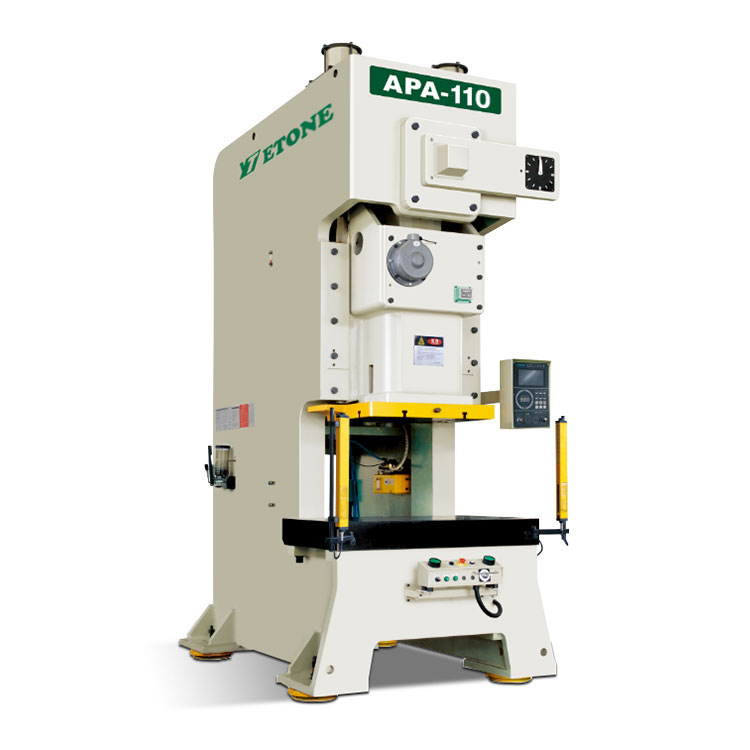A mechanical press is a machine that uses mechanical force to perform processing operations such as stamping, forming, and stretching on an object. Its working principle is based on transmitting power to the stamping die through a mechanical transmission system so that it applies pressure to the workpiece. The specific working principle is as follows:
Drive system: Usually driven by an electric motor, the power is transmitted to the mechanical system through a belt, gear or hydraulic system.
Flywheel and clutch: The flywheel stores energy, and the clutch is used to control the start and stop of the press. The flywheel stores kinetic energy when the machine is running and releases it when it starts, allowing the press to operate continuously.
Slider movement: Power is transmitted to the slider through the clutch and the connecting mechanism, and the slider moves in the vertical direction. The movement of the slider is achieved through the transmission of the mechanical system, usually including reciprocating motion.
Stamping process: When the slider moves to the bottom dead center, the die contacts the workpiece and applies pressure to perform operations such as stamping, forming or shearing. The pressure depends on the specifications and design of the machine.
Mold and workpiece: The mold is used to form the workpiece, the workpiece is placed in the mold, and is processed into the desired shape or size by the pressure applied by the slider.
Return: After the stamping process, the slider returns to the top dead center and is ready for the next stamping.
Mechanical presses are widely used in the metal processing industry, such as stamping, bending, stretching, cutting and other operations. Through the design of the mechanical structure, the press can complete complex stamping tasks at high speed and precision.


